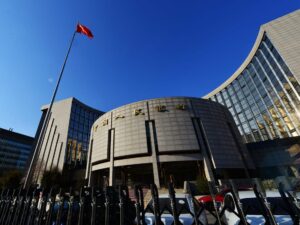>>REAL-TIME UPDATES IN THE WIRE. CLICK HERE<<<
The People’s Bank of China (PBOC) will cut banks’ reserve requirement ratio (RRR), the amount of cash that banks are required to hold as reserves, by 25 basis points for all banks except those already implementing a 5% RRR, taking effect on Friday, the central bank said on Thursday.
The RRR cut, the second so far this year, marking another major step by Chinese policymakers in recent weeks to boost economic activity amid downward pressure.
In March, the PBOC cut the RRR by 25 basis points. In 2022, the central bank cut RRR by a total of 0.5 percentage point to release more than 1 trillion yuan of liquidity.
The RRR cut will inject more than 500 billion yuan ($68.7 billion) in medium- and long-term liquidity into the economy, according to calculations by analyst at Citic Securities.
China’s economy continues to recover, endogenous power continues to increase and expectations continue to improve, the PBOC said.
Aimed at consolidating the foundation of economic recovery and keeping market liquidity reasonably ample, the cut will bring financial institutions’ weighted average RRR to about 7.4%, according to the central bank.
The central bank also promised to make its policy “precise and forceful” to better support key areas and weak links in the economy and keep yuan exchange rate basically stable.
China’s economy is facing sluggish demand, and “the RRR cut can better guide financial institutions to increase support for the real economy and boost the confidence of market players,” said Wen Bin, chief economist at Minsheng Bank.
The move is expected to free up over 500 billion yuan ($68.71 billion) for medium to long term liquidity, an official at the central bank was cited by state media Xinhua News Agency as saying.
China’s offshore yuan weakened after the decision, lifting the dollar to 7.2921 against the yuan, up 0.3% on the day.
The National Bureau of Statistics will release key economic figures for August including retail sales, industrial output and property investment on Friday.

